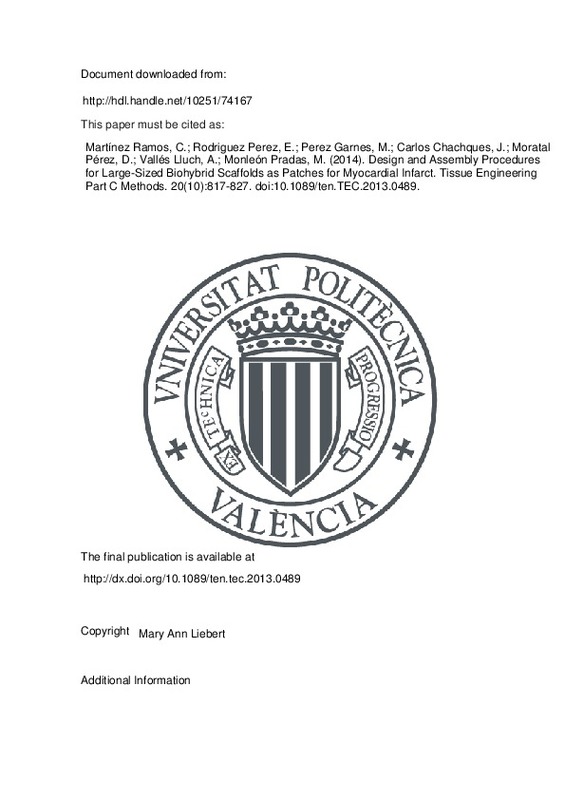JavaScript is disabled for your browser. Some features of this site may not work without it.
Buscar en RiuNet
Listar
Mi cuenta
Estadísticas
Ayuda RiuNet
Admin. UPV
Design and Assembly Procedures for Large-Sized Biohybrid Scaffolds as Patches for Myocardial Infarct
Mostrar el registro completo del ítem
Martínez Ramos, C.; Rodríguez Pérez, E.; Perez Garnes, M.; Chachques, JC.; Moratal Pérez, D.; Vallés Lluch, A.; Monleón Pradas, M. (2014). Design and Assembly Procedures for Large-Sized Biohybrid Scaffolds as Patches for Myocardial Infarct. Tissue Engineering Part C Methods. 20(10):817-827. https://doi.org/10.1089/ten.TEC.2013.0489
Por favor, use este identificador para citar o enlazar este ítem: http://hdl.handle.net/10251/74167
Ficheros en el ítem
Metadatos del ítem
| Título: | Design and Assembly Procedures for Large-Sized Biohybrid Scaffolds as Patches for Myocardial Infarct | |
| Autor: | Rodríguez Pérez, Eduard Perez Garnes, Manuel Chachques, Juan Carlos | |
| Entidad UPV: |
|
|
| Fecha difusión: |
|
|
| Resumen: |
[EN] Objective: To assemble a biohybrid cardiac patch consisting of a large (5x5 cm) elastomer scaffold whose pores are filled with a self-assembling peptide (SAP) gel entrapping adipose stem cells, to be used as a novel ...[+]
|
|
| Derechos de uso: | Reserva de todos los derechos | |
| Fuente: |
|
|
| DOI: |
|
|
| Editorial: |
|
|
| Versión del editor: | http://dx.doi.org/10.1089/ten.tec.2013.0489 | |
| Código del Proyecto: |
|
|
| Agradecimientos: |
The authors acknowledge
the financing from the European Commission through the
‘‘Regeneration of cardiac tissue assisted by bioactive implants’’
(RECATABI) FP7 NMP3-SL-2009-229239 project.
MMP acknowledges support of ...[+]
|
|
| Tipo: |
|







![[Cerrado]](/themes/UPV/images/candado.png)


